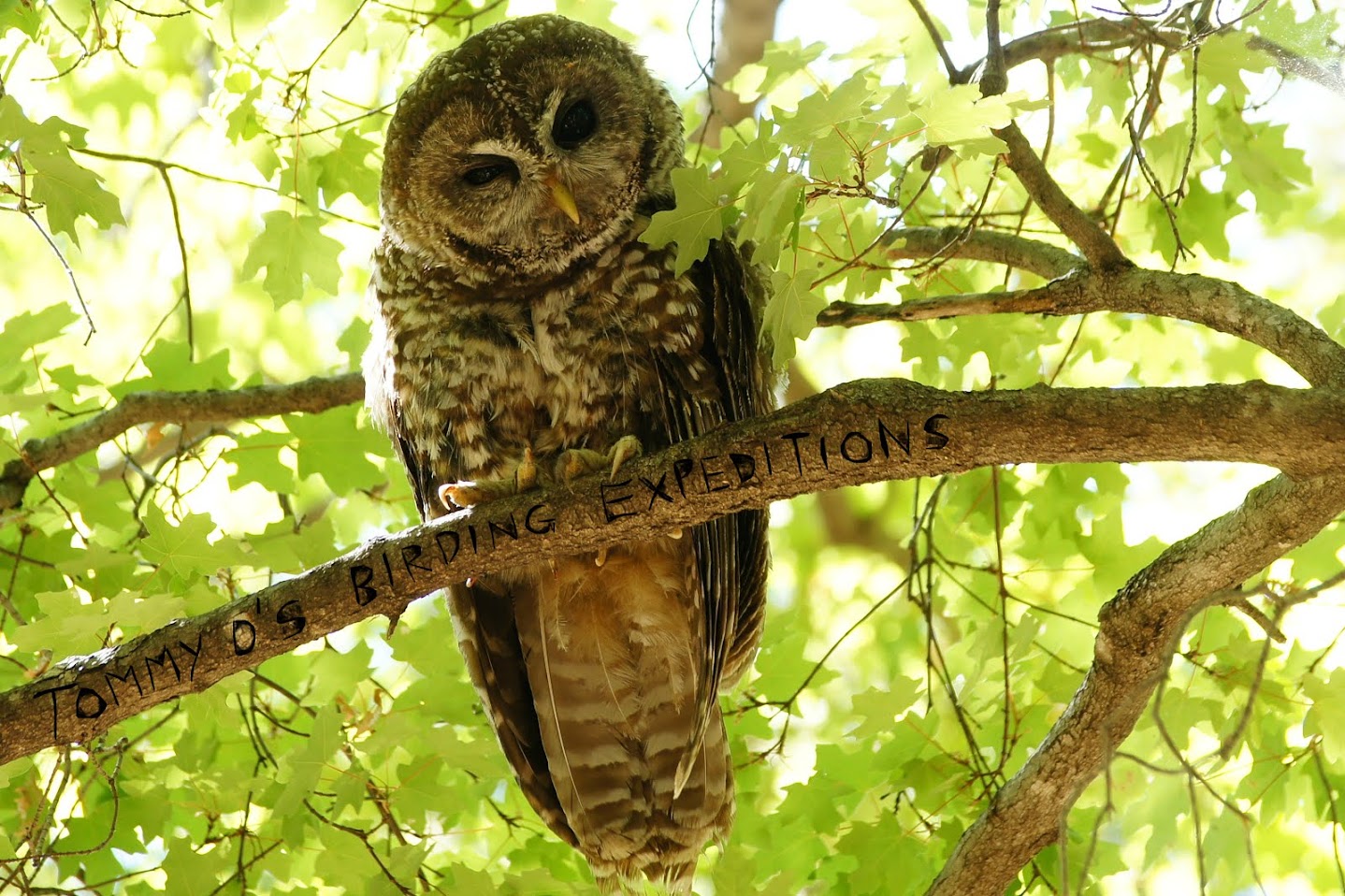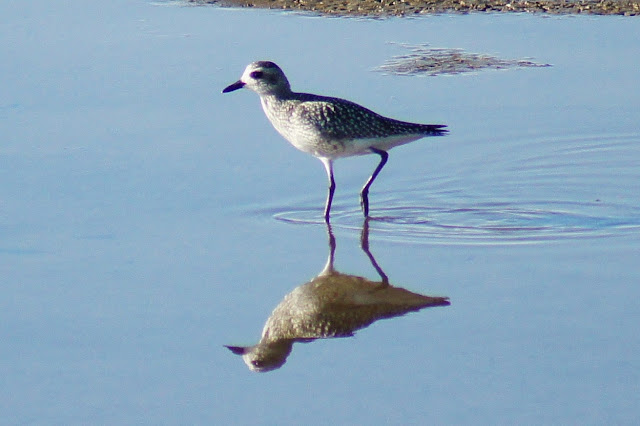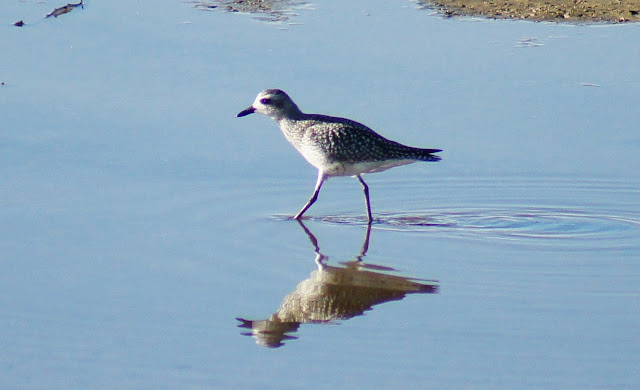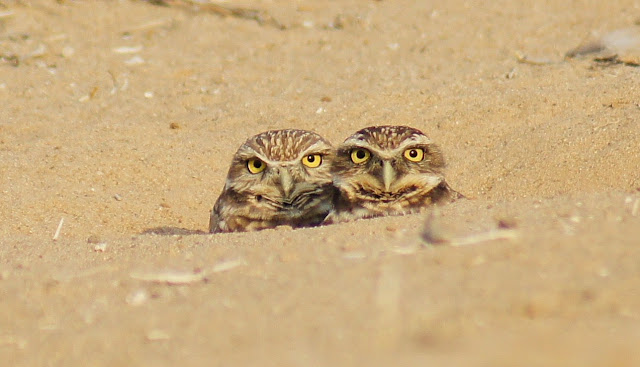I recently received a kind email from my friend Susan Fishburn. Susan invited me to go on a birding trip to Yuma County with her, Babs Buck, and Barb Meding. I gladly said yes to Susan's invitation and the four of us explored much of Yuma County together. The four of us are one awesome birding team, a hardcore one I'll add. The awesomeness we carry led straight to finding a couple of rare birds in Yuma County by ourselves!! Our team birded together for two entire days, the first one by ourselves and the second one, birding guide Henry Detwiler led us through the area. There were many good birds awaiting us in the riparian woodlands, various fields, dense marsh lands, lakes, and desert habitats. In this post, there is a lot of excitement to be found. Read up, and see how we Bird Nerds had such an epic exploration of Yuma!
As we made our way to Yuma, we were still a bit east of Yuma when we crossed the Maricopa/Yuma County lines and were in Yuma County a considerable distance before we reached Yuma itself. There was a lot of birding to be done, and there were a few locations along the way that we made stops at. We used a copy of a book written by Henry Detwiler,
Finding Birds in Yuma County, and it helped us out greatly. The first stop we made is known as the Aztec Feedlot. This is a great birding spot, as it features extensive cattle farm an feedlots, agricultural fields, and a few ponds. Rare shorebirds such as a Ruddy Turnstone has been found at one of these ponds. We didn't have a Ruddy Turnstone, but there were several cool birds in the immediate area when we pulled up and got permission from the landowner to bird the place. As we drove through the area, this Prairie Falcon quickly got our attention.
The Prairie Falcon perched for good views, but was pretty shy once we approached more closely. However, it didn't want to leave the delicious mice or birds it was feeding on (according to his taste buds, not ours), and it would retreat from us and simply fly back to the next pole. Birds like that know that cameras are present. But Prairie Falcons are simply awesome to watch and photograph in flight too, as are most raptors.
Prairie Falcon
We then started our birdlists! I usually keep detailed notes of the places I go, but I was very sidetracked on this trip. Babs started to take good notes of the birds and locations from the start of the trip to the end, and she is an excellent note taker. By the end of the trip, she has a list of every species per location, the times written down, the temperatures, a complete overview schedule of the day, and notes about the other places we stopped along the way.
As we continued down the feedlots, there were many blackbirds feeding in the lots and perching on the posts. Most of them are rather plain, but the male Yellow-headed Blackbird that we came up on was very striking! This bird is challenging to photograph when it frequents dense marshes, and one can spend a whole day without getting a top notch photograph. Feedlots are a different story. If you want a great Yellow-headed Blackbird shot, consider visiting a farm area with feedlots!
Yellow-headed Blackbird
The cows and feedlots, were however, the most numerous!
As we drove through the entire feedlot area, we then headed south into more fields. More raptors were to be seen, including another Prairie Falcon. I then saw a raptor flying across the field that I called a falcon. It oddly landed on someone's house. This house was in the middle of the large fields and was rather vacant. Perhaps it was the perfect perch for this falcon.
When I said falcon, Babs, Susan, and Barb had a different impression. They said the tail had noticable banding on it and it didn't appear to them to be a falcon, but a hawk. We were far away and the lighting was bad, so I decided to light the exposure way up with another image. Expecting an accipiter, I was very suprised with how the image came out. As it developed in less than a second, it showed a..........
Red-shouldered Hawk!
Yes, I know the photo is terrible, but it does show a juvenile Red-shouldered Hawk. Streaking on the breast, the rest of the front being barred, blah, blah. We tried to get closer, but as with most of the "Shoulders" I see, this bird was shy and didn't allow us to get much closer. I managed another bad "photograph".
Up next was Dateland. Here we stopped and birded the Date Palm Tree groves, and had some awesome date shakes. Susan bought one and let me have most of it--thank you Susan! I could definitely see a Yellow-throated Warbler showing up in this grove.

From Dateland, we continued west into Yuma. Now Yuma is really close to California, and the Colorado River is the divider between the two states. We got lost in town a few times and crossed into California on several occasions. After we found our way better, we found the hotel we were staying at and continued on to the Yuma West Wetlands. It was noon-time, and I figured the place wouldn't be very active with birdlife. But I was completely wrong the the Wetlands ended up being fantastic, even later in the day! We recorded nearly 40 species during this time frame! Our rarest bird was a Yellow-bellied Sapsucker in a cottonwood grove, our Yuma lists were already getting good birds on it. Present from the start were many Common Ground-Doves, a bird we see but not all that often. Here in the Wetlands, they were numerous and we all had good views of this tiny dove. Also present was a Great Horned Owl we spooked out of a day time roost.
Common Ground-Dove
From the Yuma West Wetlands, we continued north to Mittry Lake. Mittry Lake is the one place in Arizona where the Black Rail is found. Now, 99.9% of the time, birders have to settle on hearing the Black Rails. We tried for several hours at Mittry on this first afternoon/night without success. However, we were going to hire Henry to try for them with us the next morning when they were more likely, and I wasn't so worried. The Black Rail was going to be a lifer for me, if I was able to hear it. On this afternoon, we did hear a Clapper Rail, Virginia Rails, and Soras. There were quite a few waterbirds on Mittry Lake, including both Western and Clark's Grebes. A Sage Thrasher was a nice surprise also.
Mittry Lake
After it started to get dark, we headed back into town to make it back to the hotel for cocktail and orange juice hour. Susan, Babs, and Barb all enjoyed alcoholic beverages, and I enjoyed a hopping glass of orange juice. Barb Meding is quite the comedian, and is always cracking jokes and has everyone laughing. During cocktail hour, she is even more hilarious. Every sip she took, she got even funnier! After the drinks, we headed over to Denny's for some dinner and birding talk before crashing. I was originally going to sleep out in Susan's vehicle in the hotel parking lot. But there was a separate living room in the hotel that was off to itself, and Susan made me sleep inside in the living room. She brought me a futon and everything (she gave me a date shake earlier-which was awesome!!), and really took care of me on the trip. It was awesome of her, something I will never forget.
As October 26th, we all got up early, really early. The hotel served breakfast early also. The food was very good, and we were fueled up and ready for an epic full day of birding. The ladies hired local birding expert and guide Henry Detwiler to take us out for the day throughout Yuma County. By the end, it was a day full of excitement, and was a great second day of our trip. Henry arrived at 5:45 A.M., and we headed to Mittry Lake, hoping for those Black Rails! Henry was an excellent guide from the start, and he drove the vehicle and was very informative about this area we didn't have a clue about. After talking to Henry, we really had a great feel for Yuma County. Also, Susan, Babs, Barb, and I all have completely different personalities. Henry related to our many sides very well! As we got to Mittry, the bird life was active from the start, including White-faced Ibis flocks!

Henry first took us to a place known as the "Rail Overlook" which is productive for our main target of the trip, the Black Rail. Unlike other rails, the Black Rail doesn't like water that is deep at all. They like very shallow "pools" of water, or especially soiled areas within dense marshes. It is one of the hardest birds to see visually in North America. We got to the overlook before it was light out, and we heard both Great Horned and Western Screech-Owls. Once we got to the overlook, we heard a Clapper Rail and a Sora. Henry then exclaimed, "there's the Black". Just then we heard the Black Rail giving it's "growl" call. The Black Rail has a very characteristic and well known three-note call: "KI-Ki-Deeer". After a few minutes, a second Black Rail called that exact sequence we were hoping to hear the most. It was neat to hear it and get a new life bird. After that, a few Virginia Rails called to give us a fantastic four day before light! A few Least Bitterns were also present.
After birding the overlook, we headed to Laguna Dam and Betty's Kitchen. Tree Swallows were everywhere. We also quickly had Rock, Marsh, and House Wrens. A Northern Harrier and a very nice sighting of a Merlin were also cool to see. I wasn't able to photograph much, but this this Northern Flicker gave me something to photograph from Betty's Kitchen.
From Mittry Lake, we headed up to the Laguna Division Conservation Area, where we had many good sightings. This Coyote even greeted us on the way in.
The Laguna Divison has a lake that hosted many waterbirds, that included three Greater White-fronted Geese, Cinnamon Teal, Eared Grebe, Osprey, American Avocet, Dunlin, and Belted Kingfisher. Also around the lake was Merlin and Prairie Falcon. I was able to photograph these American Avocets. This location also straddled the state line of Arizona and California. Some of the birds we observed were in California.
American Avocets
Up next, Henry took us over to the Hidden Shores RV Park. This is a neat area, and is along the Colorado River. It also has interesting habitats along the golf course in the park, which has attracted several rarities. Henry spied a Common Loon in the distance on the river, as well as this rare and nice looking White-throated Sparrow in pile of branches with a large flock of White-crowned Sparrows.
White-throated Sparrow
From Hidden Shores, we headed up to Martinez Lake, which has abundant waterbird numbers. It was evident from the start as we encountered Martinez, as American White Pelicans were visible from a distance as we were approaching.
The Martinez Birds were distant for the most part, and were rarely in camera range. This Harrier over the marshes was my best chance at pictures.
The five of us were enjoying our time to the extreme! From left to right, here is Barb Meding, Babs Buck, Susan Fishburn, and Henry Detwiler.
Babs then helped me out and I got in a picture.
At the lake we had both Western and Clark's Grebes, Osprey, and Loggerhead Shrike for a few highlights. We then cruised around to some desert areas, where we had a great highlight and Susan spied a Sagebrush Sparrow. We got out and looked for the birds, and also found a few Bell's Sparrows to give us both species. The Bell's was a lifebird for most in our group!
Bell's Sparrow
From the area of Martinez Lake, we then headed east from the Yuma area a considerable distance and visited locations along the Gila River, and an RV park called Green Acres. Green Acres has been known for some spectacular rarities, although we didn't find any. At a pond we visited at a Power Plant, we found 8 Western Grebes. This Western Grebe was close and very cooperative.
Western Grebe
We then headed to a location called Coyote Wash, which has a golf course with a nice pond that often attracts interesting birds. We had two interesting birds, with the first one being a Greater White-fronted Goose.
Greater White-fronted Goose
The other I thought was a statue when we drove up, a huge white statue. But the statue moved and it turned out to be an American White Pelican! I thought of it strange for a huge pelican to be close to a road and lining the pond of a golf course (were golfers were walking right by it!)
American White Pelican
As the later hours of the day started to settle in, Henry took us to a section of open desert and massive agricultural fields that are south of Yuma. It is here where Henry has some of the most impressive raptor counts in the state of Arizona. I was really looking forward to seeing this place! Also, Mountain Plovers winter in this area, and I was really hoping to see them for only the second time in my life.
In the desert vegetation around the fields, Burrowing Owls are found in their true habitat, which is not a long a canal. I don't see them in this true habitat often, so this was very cool. It didn't take too long for Henry to spy one sticking it's head out of a hole.
There ended up being another Burrowing Owl to stick it's head out of the hole. It was quite the sight, and this is perhaps my favorite picture that I have ever taken of this species!
As we pulled up to the fields, the poles along the fields were lined with numerous raptors. There were Red-tailed, Swainson's, and the majestic Ferruginous Hawk. Henry often has amazing numbers of Ferruginous Hawks in these fields, sometimes numbering close to forty individuals! We fared well too, as we saw 25+ Ferruginous Hawks in less than an hour's time. Now, the Ferruginous Hawk's scientific name is Buteo regalis. The name state's the fact that it is a very REGAL bird. I may petition the ABA to change it's name to Regal Hawk. All stupid jokes aside, here's a selection of photographs that I was able to capture of this magnificent raptor.
Ferruginous Hawk






As we drove throughout the fields, I was mainly keeping my eye out for the Mountain Plover. Prior to this date, I have seen only one Mountain Plover in my entire life. I was strongly hoping this day would end in a different result. Henry sees the Mountain Plovers in flocks most often in freshly plowed fields, and he took us further south to where those such fields were to be found. At times, Henry has had counts of 250 Mountain Plovers in the area, which is very impressive. We started to scan the fields for the plovers, and weren't having much luck. As we approached our last field to scan, Susan said, "I have a feeling this is going to be the field!". We started to scan and Henry then said, "Hey, I think I have them!" Henry got his scope and confirmed that they were indeed Mountain Plovers in the distance! There were Horned Larks around also, which may also look plover like from a far distance. I looked at them through my binoculars and decided to run out into the field after them! The recently plowed field had deep soil, and it was similar in ways of running through the snow. It didn't take long for me to get exhausted! As I got to the place where Henry had scoped the Plovers, I had to really focus and refind them. The Mountain Plover is a dull colored fellow, and blends in perfectly with it's surroundings. One has to see movement first, usually, before they know there's a Mountain Plover there when the Plovers are in these dry fields. As I got closer, I saw the movement I needed! By looking at this picture below, can you understand why it would be hard to pick this bird out, especially from a distance?!

In some circumstances, the plovers may "stand out" somewhat. By this time, I was at the top of the world, great full and thankful that I was finally getting to observe this species like I have wanted to for a long time!
The flock kicked up, and I was able to get a decent flight shot of them taking off. They didn't fly far, but I was out of breath from the run I ran in order to reach them, so I left them at that!
Mountain Plovers
I also managed to get a record shot of an individual Mountain Plover, and this guy was the most cooperative out of the flock of 30. The epic Yuma County trip couldn't have ended any better than the enjoyable sighting we had with this flock of Mountain Plovers.
As our tour ended with Henry, we tallied a total of 108 species for the day on his suggested tour. And Henry said this was actually a slow time of year. My lady friends and I laughed and said that if this was slow, we would love to see it in the spring migration time frame. Henry was an excellent guide, and he found so many awesome birds for our eager eyes. Thank you again Henry for everything!
Before we headed back to Phoenix, Susan, Babs, Barb, and I went to McDonald's and recapped our trip with checklists that Susan provided. We reached a grand total of 116 species for our Yuma County trip, which was excellent! This was an awesome trip, and one that we won't forget anytime soon. Susan, Babs, and Barb, thank you so much for everything and providing such a fun and memorable trip. You are all a blast to bird with!


































































